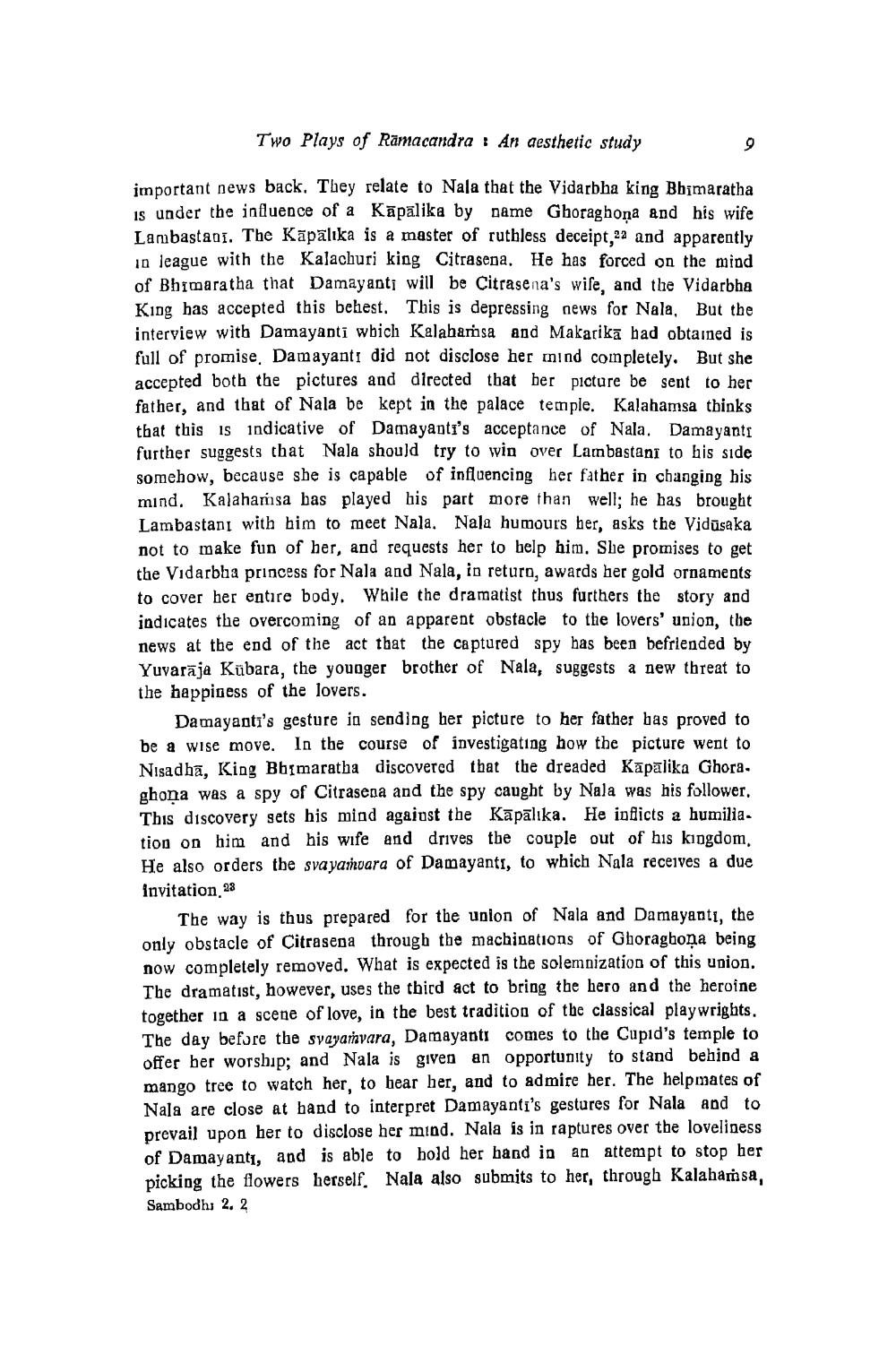________________
Two Plays of Ramacandra : An aesthetic study
important news back. They relate to Nala that the Vidarbha king Bhimaratha is under the influence of a Kāpalika by name Ghoraghona and his wife Lambastaoi. The Kāpālıka is a master of ruthless deceipt,22 and apparently in league with the Kalachuri king Citrasena. He has forced on the mind of Bhimaratha that Damayanti will be Citrasena's wife, and the Vidarbha King has accepted this behest. This is depressing news for Nala, But the interview with Damayanti wbich Kalabamsa and Makarika bad obtained is full of promise, Damayanti did not disclose her mind completely. But she accepted both the pictures and directed that her picture be sent to her father, and that of Nala be kept in the palace temple. Kalahamsa thinks that this is indicative of Damayanti's acceptance of Nala. Damayanti further suggests that Nala should try to win over Lambastani to his side somehow, because she is capable of influencing her father in changing his mind. Kalaharsa bas played his part more than well; he has brought Lambastanı with him to meet Nala. Nala humours her, asks the Vidūsaka not to make fun of her, and requests her to belp him. She promises to get the Vidarbha princess for Nala and Nala, in returo, awards her gold ornaments to cover her entire body. While the dramatist thus furthers the story and indicates the overcoming of an apparent obstacle to the lovers' union, the news at the end of the act that the captured spy has been befriended by Yuvarāja Kübara, the younger brother of Nala, suggests a new threat to the happiness of the lovers.
Damayanti's gesture in sending her picture to her father bas proved to be a wise move. In the course of investigating how the picture went to Nisadha, King Bhimaratha discovered that the dreaded Kāpalika Ghora. ghona was a spy of Citrasena and the spy caught by Nala was his follower. This discovery gets his mind against the Kāpālıka. He ipflicts a humilia. tion on him and his wife and drives the couple out of his kingdom, He also orders the svayanuara of Damayants, to which Nala receives a due invitation 28
The way is thus prepared for the union of Nala and Damayanti, the only obstacle of Citrasena through the machinations of Ghoragboņa being now completely removed. What is expected is the solemnization of this union. The dramatist, however, uses the third act to bring the hero and the heroine together in a scene of love, in the best tradition of the classical playwrights. The day before the syayanvara, Damayanti comes to the Cupid's temple to offer ber worship; and Nala is given an opportunity to stand behiod a mango tree to watch her, to hear her, and to admire her. The helpmates of Nala are close at band to interpret Damayanti's gestures for Nala and to prevail upon her to disclose her mind. Nala is in raptures over the loveliness of Damayanti, and is able to hold her hand in an attempt to stop her picking the flowers herself. Nala also submits to her, through Kalahamsa, Sambodh; 2. 2




